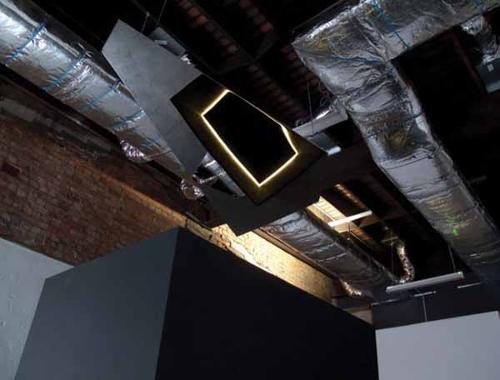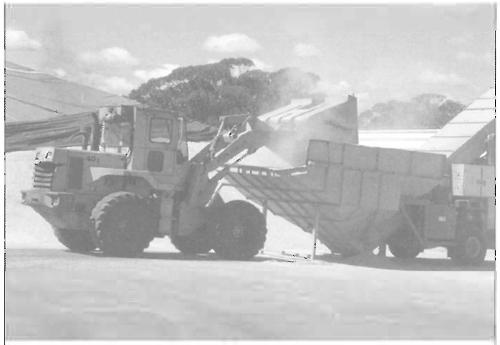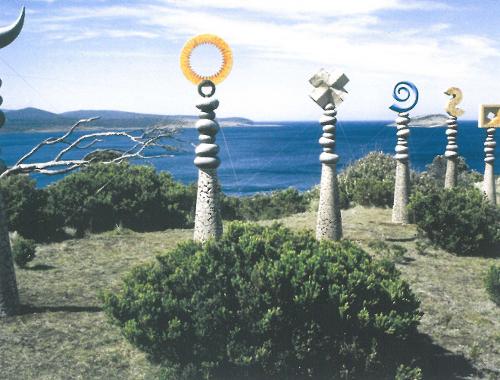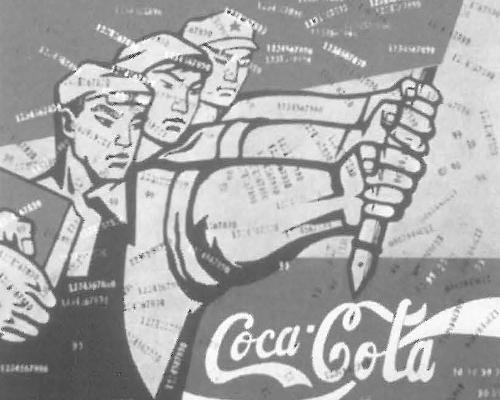Search
You searched for articles tagged with Environment ...

A Water or a Light
Water figures in Australian art and Australian history as a vital thread binding together many narratives and imageries. Art that concerns itself with some manifestation of water demonstrates what can be considered a new phase in Australian art about the land. David Keeling, Nicole Ellis, Ruby Davies, Peter James Smith, Patricia Picinnini, Judy Holding and Danielle Thompson are all Australian artists whose work is manifested by this notion of the land and of water.

Thirsty Work
This article tells the story of the Irish engineer CY O'Connor who was appointed to oversee the construction of the pipeline that would supply the Kalgoorlie goldfields with fresh water and whose suicide caused much controversy in the region. The O'Connor monuments throughout the south of Western Australia are now being joined by contemporary sculptures that tell the other side of the story and play on the anxieties buried below. Anne Neil and Adrian Jones have developed works such as Death by Water which acts as a thirsty allegory of CY's life and Water Carrier which encourages visitors to listen to the trickle of despair that is so ingrained in the history of Kalgoorlie.

Art and Landliteracy Forum
The Art and Landliteracy Forum (ALF) was established within the School of Contemporary Arts at Southern Cross University in 1996. It was convened as an ongoing forum for investigating ways in which contemporary arts practice can be pro-active in relation to environmental issues. The program evolved into a series of placemaking/placemarking projects that were focused on contributing to cultural sustainability.

Wasted
Metis is a remarkable fusion of art and science. The first of these biennial events, held in May 1999, was inspired by Rebecca Scott from the CSIRO and Canberra artist Jill Peck, and featured works which resulted from a range of collaborations between artists and scientists. Metis 2001 - Wasted focuses on environmental themes including detritus, recycling, toxic waste and land degradation.
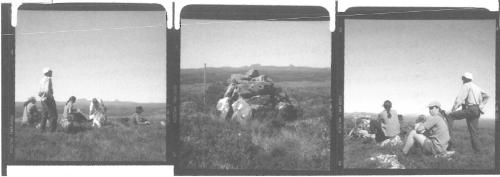
Art and Landscape in Tasmania
Robyn Archer has moved from Adelaide to direct Tasmania's first international arts festival. 10 Days on the Island is a clever poem that steps around the customary wilderness branding of the state and links Tasmania into a productive global context.

Polemic: Why did they Cancel Sensation?
Brook discusses what he believes to be the two main problems with the cancellation of the Sensation exhibition at the National Gallery - to locate the issue and to restore some gravity, so that instead of the noise increasing with distance from the issue, it diminishes. The key figure discussed is the Director of the NGA, Dr Kennedy with the notion of Quality dominating the content of the article.

Beyond Language
Although often disguised as an innocent communication tool, language is defined, and, in turn, defines the parameters of all aspects of life, from the most personal and private to socio-political conditions and power structures. Giakoumi discusses this fact in relation to artist's experiences of living and working in countries where language barriers are apparent. Four works by artists Shigeaki Iwai, Xu Bing, Kim Young-Jin and Lee Mingwei are closely examined through this text.

The Arts of Diplomacy
Manton looks at the relationship between the Department of Foreign Affairs and Trade and the art world in Australia, one that seems to have been difficult, particularly since the 1970s when the Commonwealth Art Advisory Board gave way to a National Gallery and an Australian Council for the Arts. Furthermore this text examines the growing relations between Australian and Asian art communities during the second half of the 20th century.

Expanding Horizons: Art from Taiwan
This article looks at the recent history of cultural exchange between Australia and Taiwan and briefly examines the background of the shifts occuring within the Taiwanese art scene from an Australian context. Furthermore it examines some of the continuities and changes in the late 1990s with a particular emphasis on the works by artists Wu Tien-Chang and Wu Mali included in the Second and Third Asia-Pacific Triennial.

Korean Contemporary Art in the 1990s
Korean art in the nineties experienced an era of unprecedented freedom and a remarkable upsurge in visual expression. Ahn looks at the progression of Korean art and politics during the later years of the 20th century and at a few of the central art figures: Kim Myung-hye, Choi Jeong-hwa, Kim Jun, Kim Soo-ja, Han Myung-Ok, Choi Jae-eun, Kim Young-jin and Lee Bul.

Radicalising Tradition: Painting in Pakistan
The teaching of miniature painting has, since the 1980s when it became a part of the National College of Arts (NCA) in Lahore, become a highly respected and important traditional genre. The role of miniature painting also came to represent many of the anxieties that entangled this postcolonial society in search of its own identity. Hashmi examines the importance of this artistic form with reference to the works of Nahid Fakhruddin, Shahzia Sikander, Imran Qureshi, Tanzeen Qayyum, Talha Rathore, Aisha Khalid and Nusra Latif.

Shifts and Transitions in Indonesian Art and Society
This article looks at the East Timor crisis and the attempted boycott of the APT 3 at the Queensland Art Gallery subsequent to Indonesian artists participating in the event. Marianto examines this in relation to the shifting powers in Indonesia at the time from the ruling of President Habibie to the fourth leader Abdurrahman Wahid (Gus Dur) and presents a list of what could be considered seven strands of artistic concern within Indonesia: The critical group, alternative art, art for art's sake, conventional art, marginalised individuals, media-influenced art and feminist artists.

The Enigma of Japanese Contemporary Art
Japanese culture at the end of the twentieth century was at an intersection of past, present and future. Exhibitions including Against Nature at the Grey Art Gallery in New York (1989), Japanese Ways, Western Means at the Queensland Art Gallery in Brisbane (1989), A cabinet of Signs at the Tate Gallery Liverpool (1991) and Zones of Love at the MCA Sydney (1991) showed for the first time the complex and urban basis of Japanese art in the 1980s, a time of considerable transition in Japanese art practice. Featured artists included Shigeo Toya, Kimio Tsuchiya, Yasamasa Morimura, Takashi Murakami, Emiko Kasahara, Masato Nakamura, Yukinori Yanagi, Katsushige Nakahashi and Tatsuo Miyajima.
Hook's Mountain - The Environment as Theatre
Tasmanian theatre company Zootango's touring production Hook's Mountain.
Art, Architecture & the Environment

The artworld and the paradox of sustainability
Robert Nelson proposes poetic solutions to overcoming our carbon plinth print

Shaun Gladwell: The Lacrima Chair; Collection+
Shaun Gladwell: The Lacrima Chair (SCAF Project 24); Collection+: Shaun Gladwell (SCAF Project 25) Sherman Contemporary Art Foundation, Paddington UNSW Galleries, Sydney
6 March – 25 April 2015
6 March – 25 April 2015

Outside Thoughts
Mitch Cairns, Emily Floyd, and Danie Mellor
Darren Sylvester Contemporary Art Tasmania, Hobart
19 March – 19 April 2015
Darren Sylvester Contemporary Art Tasmania, Hobart
19 March – 19 April 2015

Modern Asian Art
John Clark, Sydney: Craftsman House, 1998,
344 pp., 48 colour plates, hardcover, ISBN 90-5704-04-17, $85
344 pp., 48 colour plates, hardcover, ISBN 90-5704-04-17, $85

Anxious Nation: Australia and the Rise of Asia 1859-1939
David Walker, University of Queensland Press, 1999, 312pp, paperback RRP $29.95

Cheo Chai-Hiang Thoughts and Processes (Rethinking The Singapore River)
Cecily Briggs, Singapore art Museum & Nanyang Academy of Fine Art, 2000, 132pp RRP $40



